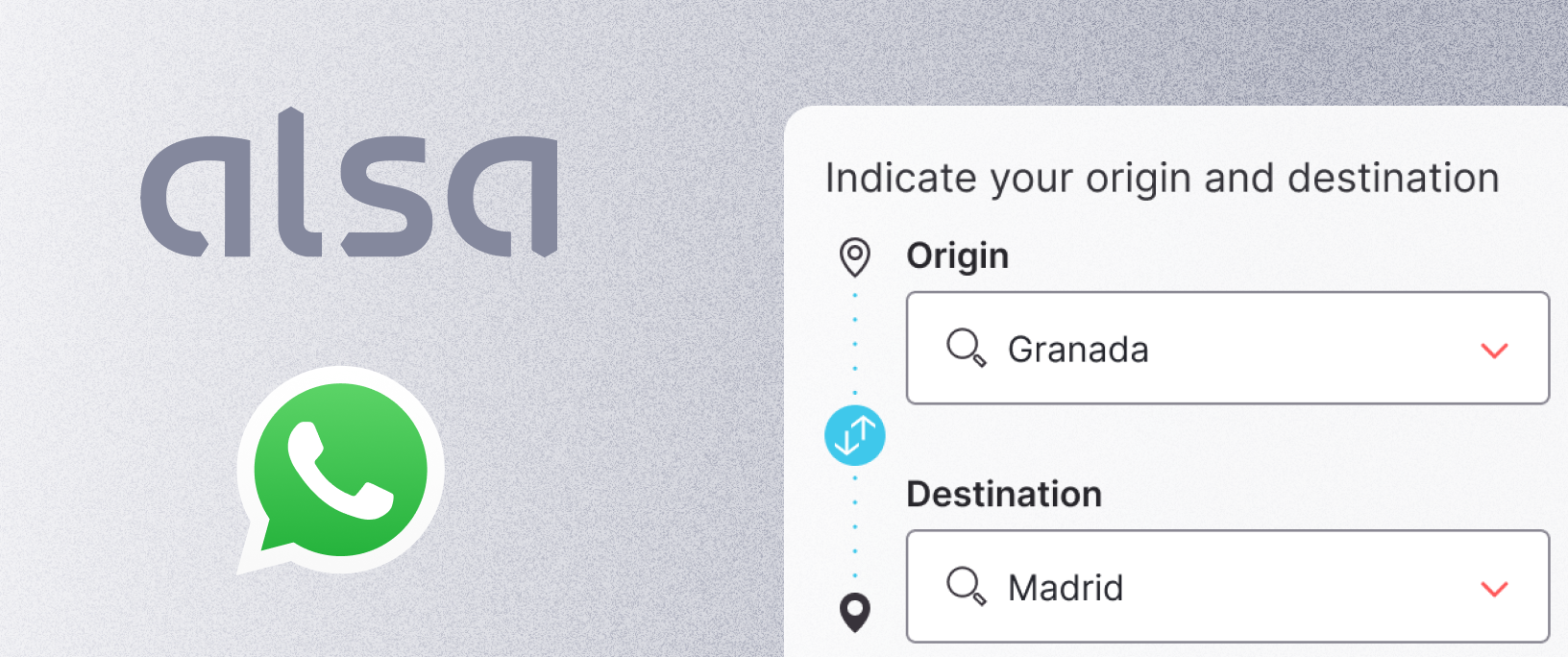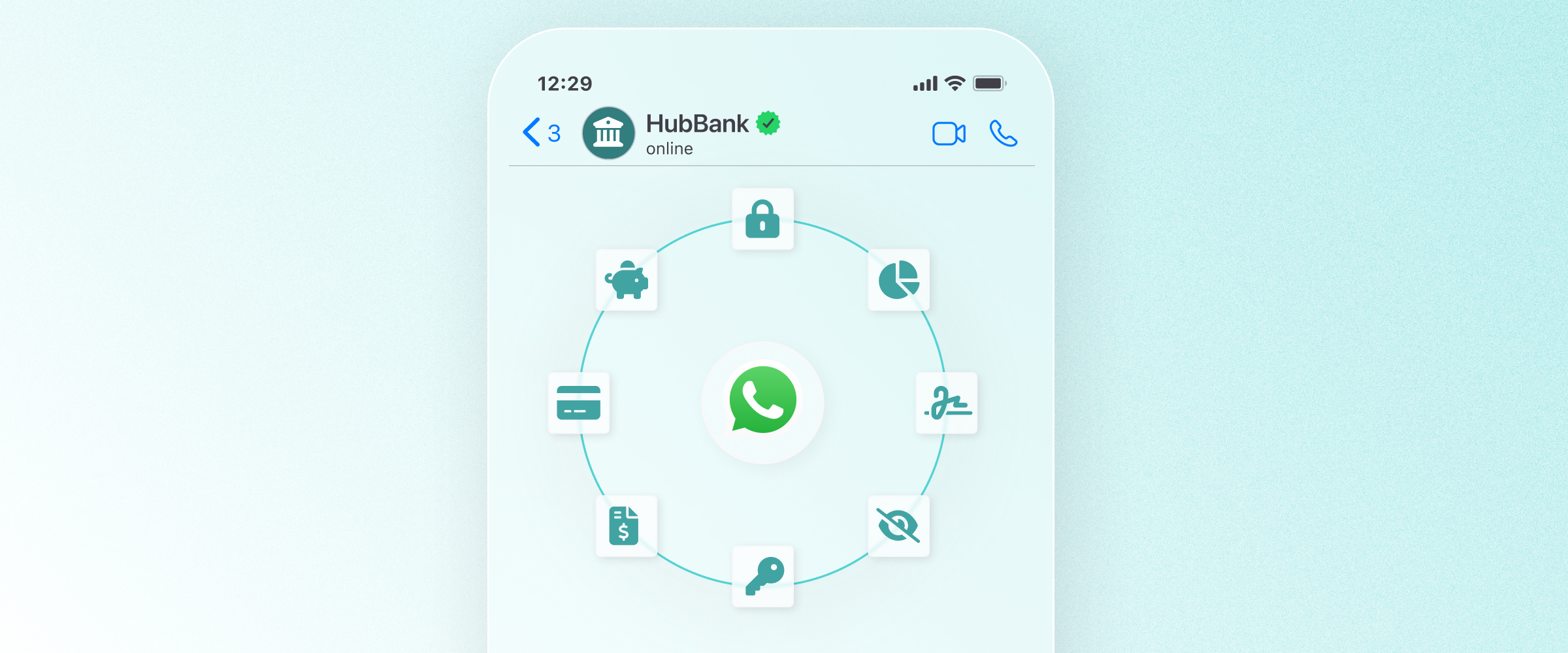Messaging isn’t just a feature—it’s becoming the foundation of how ecommerce brands build relationships, drive revenue, and improve ecommerce’s customer experience. Today’s most successful retailers aren’t using messaging to patch gaps in service; they’re using it to build entire sales journeys that feel as personal and seamless as shopping in-store.

Why messaging matters in today’s ecommerce
Today’s shoppers expect real-time, mobile-first interactions—and messaging apps are where they already spend their time. WhatsApp, Messenger, Instagram DMs, and other channels consistently outperform email and SMS in open rates, reply times, and engagement. Just for you to get an idea, WhatsApp messages have an open rate of 98%, in comparison to a mere 20% for email communications.
AI-powered messaging brings a new level of agility. Brands can now personalise interactions at scale, reduce customer acquisition costs (CAC), and increase customer lifetime value (LTV). It’s where convenience meets conversion, and the shift is already underway.
Core use cases that drive revenue
Personalised product discovery
Why make shoppers dig through your site when you can curate products directly in chat? With embedded product catalogues, guided style quizzes, and AI-led recommendation flows, customers can explore options, ask questions, and build a cart without leaving the messaging thread. A frictionless conversational commerce experience that builds customer loyalty.
Abandoned cart recovery
Cart abandonment costs ecommerce brands $18 billion each year. Messaging makes follow-ups feel helpful, not pushy. With contextual nudges like “Your item is almost gone” or “Want to complete your order?” brands can recapture lost revenue and offer support in the moment.
Proactive order updates & WISMO
"Where is my order?" is still one of the most common (and costly) inquiries. Messaging eliminates the need for reactive support by sending proactive shipping updates and automating WISMO queries, reducing contact centre load and improving CX.
Messaging-based loyalty & re-engagement
Reward your best customers in the places they’re most likely to respond. Send restock alerts, early access to new collections, or loyalty point updates—all based on purchase history or engagement behaviour. Messaging makes loyalty feel truly personalised.
Conversational marketing campaigns
Run opt-in campaigns that get seen. Messaging-based promotions boast 90%+ open rates—far higher than traditional email. Hubtype’s clients have seen +32% higher conversions compared to email campaigns by using WhatsApp to engage their audience with exclusive offers.
Hubtype’s take: what modern messaging looks like
Modern messaging isn’t live chat on your homepage—it’s a full funnel strategy powered by automation, design, and AI.
With Hubtype’s Sales AI Agents, ecommerce brands replicate the experience of an in-store associate inside WhatsApp, Messenger, or webchat. These assistants understand intent, personalise recommendations, and guide users from product discovery to checkout.
Case in point: Guess Personal Shopper via WhatsApp
To bring the high-touch customer service experience from stores online, Guess launched a personal shopper powered by Hubtype’s Sales AI Agent inside WhatsApp. The experience combined curated product recommendations, styling advice, and conversational flows that guided customers from inspiration to purchase, all without leaving the chat.
The results?
- +60% increase in average basket size, driven by personalised product suggestions.
- +40% increase in customer spend among users who engaged with the conversational assistant.
This is what happens when messaging is done right: fewer dropped sessions, higher order value, and more loyalty built one conversation at a time.
5 principles for an effective messaging strategy
Messaging isn’t just about the channel—it’s about the operating model behind it. These five pillars will help your team shift from reactive chat support to a proactive messaging-led sales strategy.
1. Automate with precision, not just volume
The best messaging strategies use automation to scale smartly, not generically. Start by automating predictable, low-touch interactions—like FAQs, order tracking, or guided product discovery. Then, reserve high-impact moments like personalised styling, clienteling, or complex support for AI-powered Sales Agents that combine context, brand tone, and intelligent handover.
Why it matters:
This hybrid approach preserves the human feel while fostering operational efficiency, and it prevents your team from burning out on repetitive tasks.
2. Break down data silos to power relevance
Messaging can’t live in a vacuum. Integrate it with your ecommerce stack—CRM, CDP, marketing tools, order management—to ensure every message is informed by real-time behaviour, purchase history, and customer status.
Why it matters:
Context-rich conversations convert better. And by centralising data across systems, you’re setting the stage for scalable personalisation and smarter automation.
3. Segment with intent, not just demographics
Effective messaging isn’t one-size-fits-all. Use behavioural triggers—like cart abandonment, product views, or inactivity windows—to send messages that reflect what customers actually need, in the moment they need it.
Why it matters:
Real-time intent signals drive engagement. Instead of broadcasting generic promos, you're offering helpful nudges that feel timely and relevant.
4. Design for the way people actually chat
Think beyond text-only chatbots. A great messaging UX borrows from the best of mobile apps—carousels, quick replies, embedded checkout—so every interaction is smooth, visual, and intuitive.
Why it matters:
When messages feel like conversations—not clunky forms or static bots—customers are more likely to complete the journey, not drop off halfway through.
5. Think like a product team: test, learn, scale
Messaging isn’t a set-it-and-forget-it channel. Treat it like a living product. Start with high-impact use cases—like abandoned cart recovery or back-in-stock alerts—then iterate based on performance and customer feedback.
Why it matters:
The brands that win with messaging build incrementally, learn quickly, and scale based on what actually works.
Messaging is the future interface of ecommerce
The brands that win in ecommerce aren’t treating messaging like another marketing channel—they’re treating it like a sales assistant, a loyalty driver, and a revenue engine. With the right mix of automation, AI, and strategic intent, messaging transforms how brands sell and serve.
Want to build a messaging strategy that drives growth?
Contact us and let’s talk about how Hubtype can help you turn every conversation into a conversion!









.jpg)

